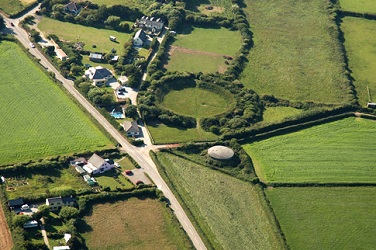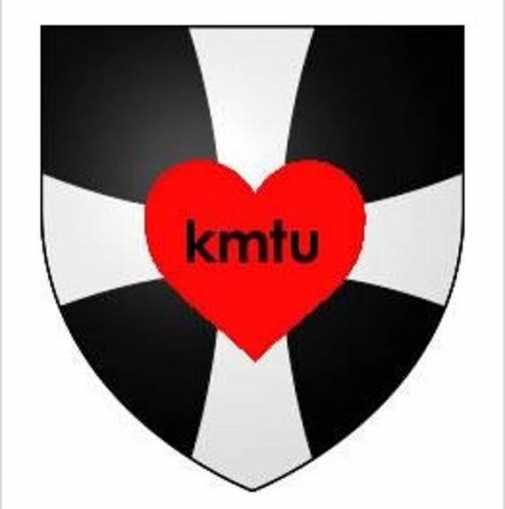Perran Round
Perran Round is the best surviving example of a plen an gwary, a Cornish medieval amphitheatre. Indeed, it is often described as Britain’s earliest theatre.
Cornish language miracle plays were performed in these structures across much of Cornwall throughout the Middle Ages. It is widely believed that Perran Round was specially created as an open air theatre, although it is possible that it was an Iron Age or Romano-British enclosure adapted for use in medieval times.
The earliest plan of the site was produced by William Borlase in his Natural History of Cornwall in 1758. His depiction of the Round shows it much as it is now, with two opposed entrances and the ‘Devil’s Spoon’ (a hollow with a trench extending to the eastern side of the arena) which would have been used in the performances.
On the 1813 Ordnance Survey Map, a roadway is shown as still winding through the Round while to the immediate north-west and south of the monument the land was unenclosed and rough.
As the best preserved plen an gwary, the Round is seen as an iconic site for Cornish identity and language. The Cornish Gorsedh for example has held its annual ceremony within the Round on no less than five separate occasions.
The miracle play Bewnans Meryasek (The Life of St Meriasek) was performed in the Round in July 1951 by Gwaroryon Gernewek as part of the Festival of Britain, and later performances of similar plays included the 1969 Cornish Ordinalia by the Bristol University Players, Gwyrans an Bys (Creation of the World) in 1973 and an extract from the Ordinalia in July 1996.
Perran Round is currently leased by the St Piran Trust,







